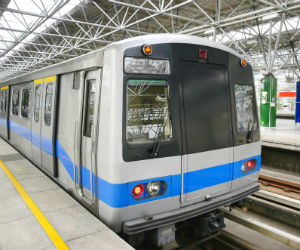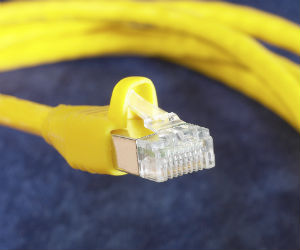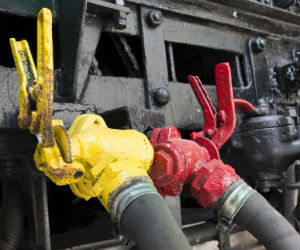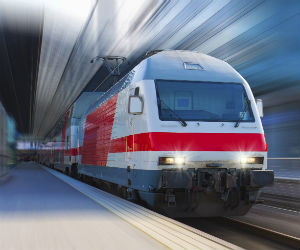Public transport safety requirements place tremendous demand on security companies and governments, right from the storage devices to the transmission technology and supporting infrastructure.
Public transport safety requirements place tremendous demand on security companies and governments, right from the storage devices to the transmission technology and supporting infrastructure. Ensuring the safety of commuters is a priority in any country, but reaching the right solution is a tricky issue.
The critical aspect in protecting public transport systems is that solutions have to be installed after carefully consideration of the conditions and evaluating the customizations that would be required. But even such initial challenges are overcome, the infrastructure support available at a location will be a decisive factor in the end results.
So what constitutes the best technological combination for mobile security surveillance? In this article, we ask several industry experts their take on the ideal security solution for public transport systems.
Technical specifications that demand the best infrastructure
 To keep the requirement of storage
To keep the requirement of storage
capacity as low as possible,
solid wireless links are required.
Given the nature of this vertical, a necessary requirement for onboard systems is sufficient storage and redundancy to enable a minimum storage time. To keep this requirement of storage capacity as low as possible, solid wireless links are needed to transfer data from vehicles to the ground systems. Solid state drives (SSDs) are considered the best option, although they are expensive.
“This means that cameras and the storage system should ideally be accessible from the driver panel as well as from the ground system 24/7,” said Johan Slotte, Deputy CEO of
Teleste. “The security in storage of data as well as in remote access to the monitoring system is essential. The back-up system of the data should exist in the vehicles, but especially in the ground systems, where the data is stored for longer duration.”
Wallace Ma, Executive Director of
TeleEye Group, on the other hand, believes that the data rate of Wi-Fi is still not sufficient if an organization has a large fleet, recommending the use of wired LAN at depots as a more practical solution. For remote monitoring, he agreed that the options are limited, and 3G/4G solutions are currently the best available options to date.
Musk Li, Product Manager at
Dahua Technology pointed out that the limitations of cellular network necessitates more focus on the strategy and technology, adding that his company’s products utilize a high-performance encoding algorithm, video coding rate control, synchronous transmission of multi-channel video, and audio coding data priority to meet the requirements.
But depending on the location, the infrastructure may not support 3G or 4G, and may be limited to GPRS, restricting performance of the solution. This is particularly relevant in developing economies and areas outside cities.
Ruslan Salimov, Regional Sales Manager for EMEA at
EverFocus Electronics, believes that high capacity internal storage is still a must, as well it would be best to separate meta data, such as GPS/speed/G-sensor information, and video data to provide administrator with all the relevant information using minimal wireless connectivity.
Transmission technology optimized for the environment
 Recent developments aid standardization
Recent developments aid standardization
and multiple application of Ethernet.
Bandwidth is increasingly a concern in security solutions on trains, as more cameras are being installed in rail carriages. Increasingly, data from passenger information systems (PIS) and public address systems are also being integrated with video and emergency call with a camera, to be delivered to the driver’s room.
“Since we have more cameras, there’s also the issue of limited bandwidth,” said Kevin Shen, Product Manager for Industrial Video Networking Division at
Moxa. Carriages are grouped in threes to form a total of about six groups, with copper cables used as media to carry the data from all the electrical devices. However, the number of pins is limited.”
Gigabit Ethernet, which offers bandwidth of 1000-megapixel per second, needs 8 pins as backbone. In addition, there is the issue of peak that impacts videos transmitted on trains. Bandwidth will not always be stable and at times it peaks because the camera continuously records moving objects or the camera is getting too close to the people. Such things lower the compression efficiency of the cameras and hikes bandwidth requirement.
Shen said that recent developments in onboard video surveillance systems aid the standardization and multiple applications of Ethernet for all the onboard electronic/electrical devices.
Ensuring power supply for ideal performance
 Ensuring the right connectivity between carriages
Ensuring the right connectivity between carriages
is crucial to stable communication.
The EN 50155 standard does not just takes into account vibration and temperature, but also ensures stable power supply. In trains the power is 24 to 110V DC. Companies such as Moxa design its own power supply systems that make sure there are no interruptions to the surveillance equipment. Its power supply can remain stable even when facing surge during normal operation from -30 to +25 percent.
Ring topology is the ideal redundancy solution in trains. If power is off in one Ethernet switch the system will automatically take different route to recovery. But so far the recovery time of standard RSTP takes three to five seconds, and different companies have taken up their own proprietary technologies.
In many cases there would be video loss of about three to five seconds, which is about 130 to 150 frames. But Moxa’s engineers have ensured that any such loss is limited to 20 milliseconds, which, at the most, is only one frame lost to ensure video surveillance runs smoothly without system downtime.
Security of connected devices and transmitted data
 Experts warn that mobile surveillance does
Experts warn that mobile surveillance does
come with risks to attacks from hackers.
As mobile surveillance solutions increasingly integrate different kinds of applications, there are widespread concerns on how secure the data being transmitted is. Earlier this year, such concerns were up for public debate when news of two researchers demonstrating how they could access a Jeep Cherokee and hijack it from the user went viral.
A recent report from the cybersecurity company Kaspersky had also indicated that video surveillance systems are increasingly vulnerable to misuse by third party. Such apprehensions are significant in mobile surveillance solutions as well and industry players agree they should be taken seriously.
“All systems should have sufficient safety and security measures to begin with,” said Slotte. “End-to-end encryption is recommended whenever possible. Also the access rights management for the systems should be controlled and well monitored.”
Ma agreed that hackers are a real threat in general to video surveillance and to mobile DVRs, insisting that professional mobile DVRs should come with robust hacker-resistant design. Users too have to be diligent and fully utilize the security features that the products offer.
According to Salimov, EverFocus now uses Linux-based software platform for its solutions, which is considered more secure and faster than Microsoft Windows-based applications. Although this is not a traditional approach, he insisted that System Integrators who deal with mobile and security projects realize that EverFocus’ systems optimize the resources better and provide a higher flexibility for expansion and integration with any other existing solutions (Windows-or Linux-based).
Current and upcoming trends in the vertical
 As more applications get integrated, this
As more applications get integrated, this
vertical is expected to new developments in
the short to medium term.
Intelligent systems are a general direction towards which security solutions are moving, and it’s no different in the mobile surveillance vertical. More applications could be integrated together, paving way for more comprehensive solutions.
“For example, the mobile DVR on the public bus can use the people counting function to calculate the people flow statistics of each bus station,” said Dahua’s Li. “It can help the bus transportation company to do operation and business analyses and arrange reasonable bus lane and schedule.”
According to Tai, if trains from different manufactures need to be connected in a train, a standard Ethernet network would also be necessary. To this end, IEC 61375 is a new standard. And Moxa as the International Electrotechnical Commission (IEC) working group is the industry pacesetter for this new standard.
In addition, to have higher passenger security level, the next step is to make the video surveillance system more pervasive, so that it extends seamlessly from the station onto the train itself and can follow activity no matter where it occurs. In order for this to happen, there needs to be a solid wireless train-to-ground (T2G) network that can transmit video data from the onboard IP cameras to the trackside network and control center.
At present one-megapixel cameras are the norm for onboard solutions, but this is expected to move to two megapixels soon, increasing the costs of cabling and storage, and posing more challenges to transmission. There are also attempts toward introducing video analytics in trains, although this has not yet become popular yet.
Slotte added that mobile passenger information systems (PIS) are also becoming a trend. Combining infotainment with PIS could be advantageous to overcome the costs and assist in financing PIS solutions.
“Different wireless applications and technologies are now emerging in transport business,” Slotte said. “The capacity to transfer data is increasing remarkably due to the evolution of different wireless technologies. We also see a trend of end-to-end solutions with the same system covering both stations and vehicles which leads to more efficient systems and savings in both capital and operating expenditure.”
The ideal mobile surveillance solution
An ideal mobile surveillance solution requires optimized infrastructure support and specific equipment tailored for the vertical. There are several factors to consider when providing mobile surveillance solutions, ranging from the ruggedized equipment to the best transmission technology.
Recent technological developments have helped improve the solutions in this vertical, but have also paved way for a demand to integrate more applications together. With the current demand in this vertical, even more interesting technological and business developments may be seen in this vertical. For security companies, this certainly is a sector to keep an eye on.